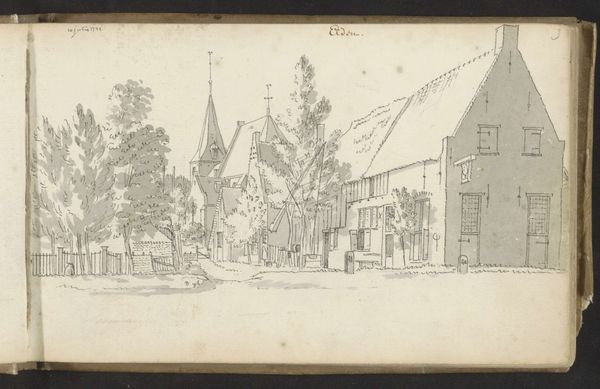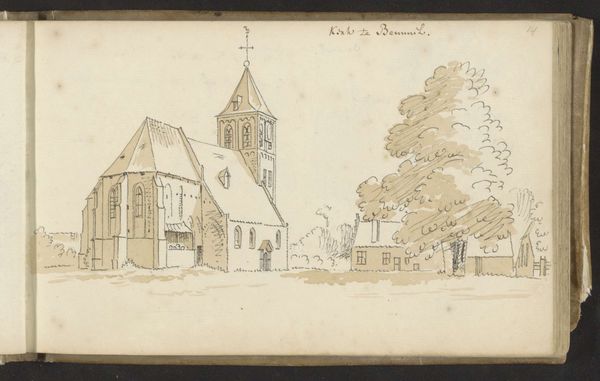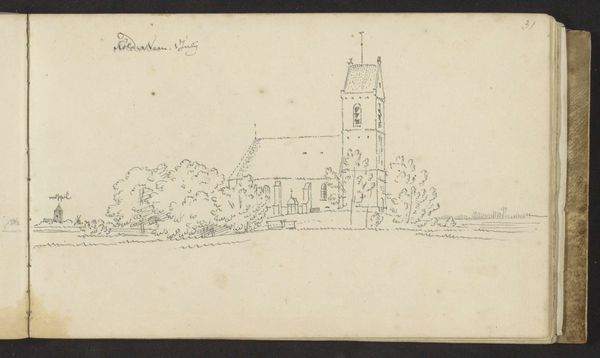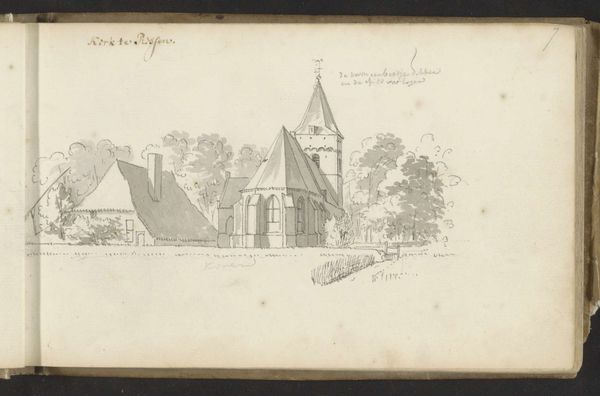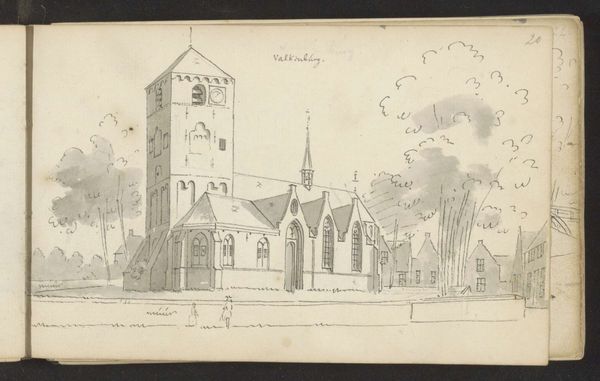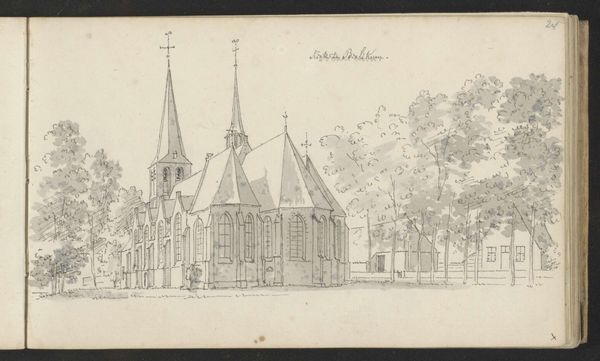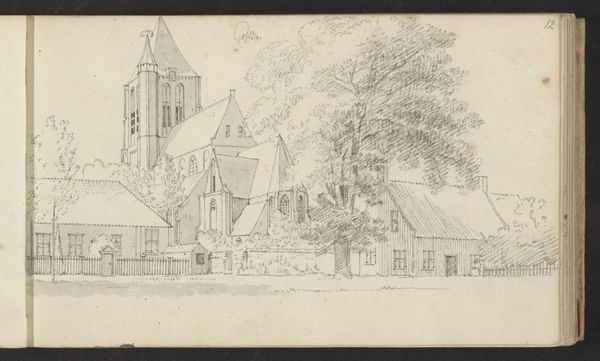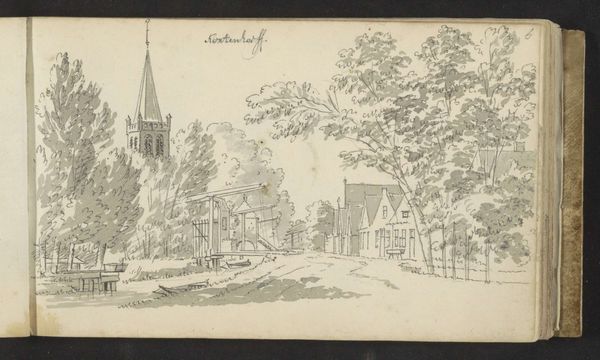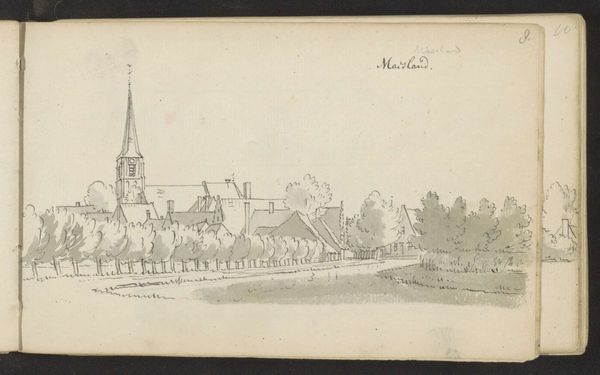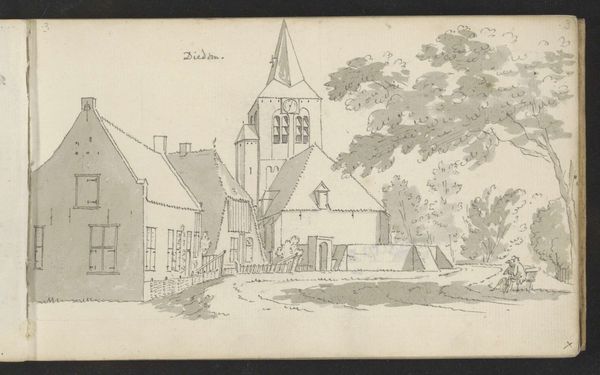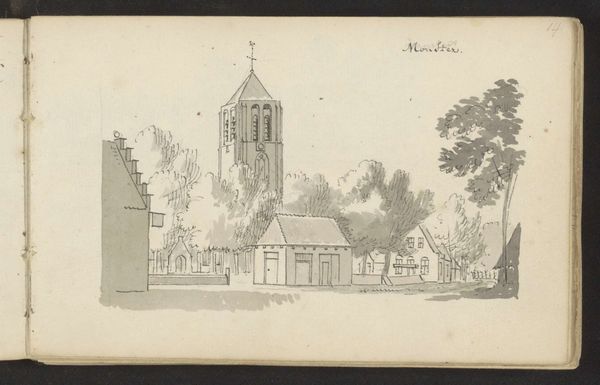
drawing, ink, pen
#
drawing
#
aged paper
#
toned paper
#
quirky sketch
#
dutch-golden-age
#
pen sketch
#
sketch book
#
landscape
#
personal sketchbook
#
ink
#
pen-ink sketch
#
pen work
#
sketchbook drawing
#
pen
#
cityscape
#
sketchbook art
Copyright: Rijks Museum: Open Domain
This pen and gray ink drawing of a village scene with a church in Rijnsburg was created by Abraham de Haen II in the 18th century. It’s a humble depiction, really, but consider the labor involved in its making. The artist would have mixed his own ink, feather quill in hand, and set about the task of observation. Every line, every shadow, a record of time spent. And the support? Likely a sheet of paper made from pulped rags – itself a laborious process of collection, preparation, and pressing. Although this drawing may seem simple, it’s a testament to the collaboration between artist and materials. The ink’s fluidity, the paper’s absorbency – these qualities dictated the final form. It’s a reminder that even the most seemingly effortless artwork is the result of skilled work and a deep understanding of materials.
Comments
No comments
Be the first to comment and join the conversation on the ultimate creative platform.
